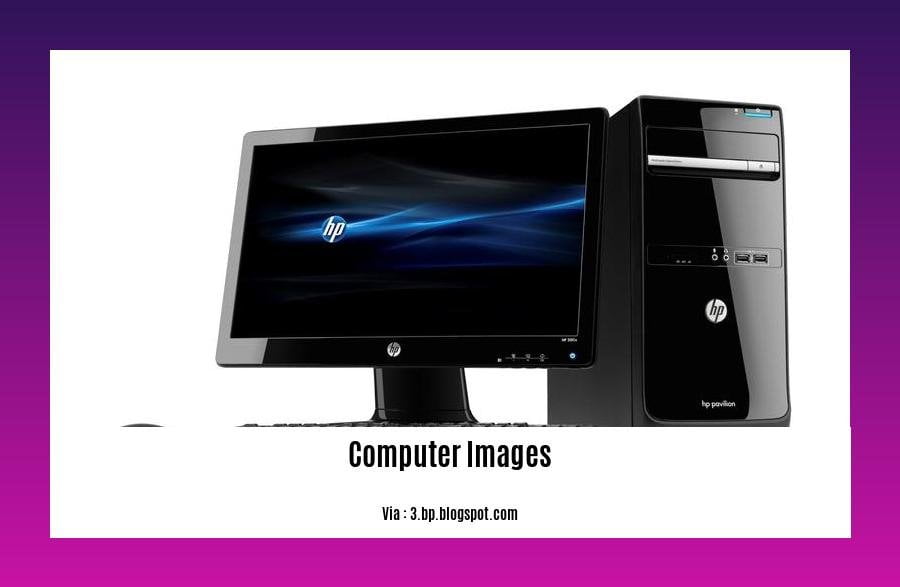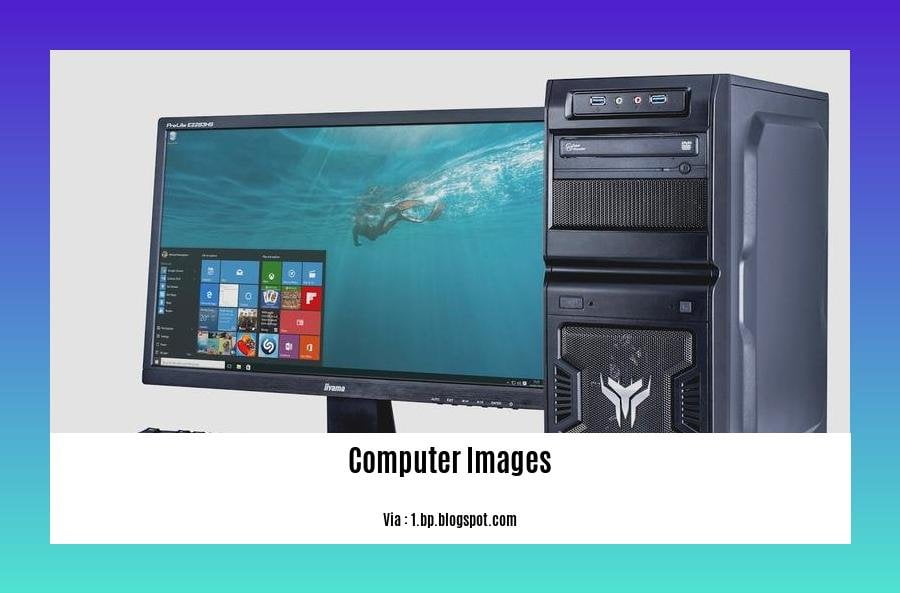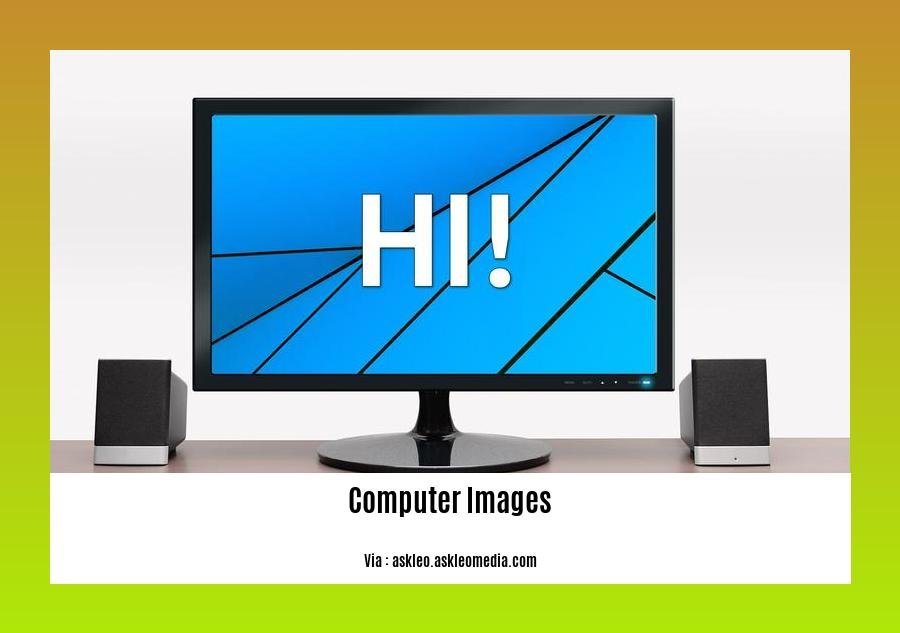Discover the fascinating world of computers with our comprehensive guide to 10 enlightening facts. In “10 Facts About Computers: Unveiling the Mysteries Behind Their Fascinating Abilities,” we delve into the inner workings of these machines and unravel the complexities that make them indispensable in our modern lives. Join us as we explore the evolution, functioning, and impact of computers, shedding light on their often enigmatic nature. From processors and storage to artificial intelligence and quantum computing, prepare to be amazed by the capabilities of these extraordinary devices.
Key Takeaways:
- The first electronic computer, ENIAC, weighed more than 27 tons and took up 1800 square feet.
- The first computer virus, called Creeper, was created in 1971.
- The world’s fastest computer is the Fugaku supercomputer, capable of performing over 415 quadrillion computations per second.
- Google uses 1,000 computers in just 0.2 seconds to answer a single search query.
- The QWERTY keyboard was designed to prevent typewriter keys from jamming.
- The first computer mouse was made from wood by Doug Engelbart in 1964.
- Around 317 million new viruses are discovered daily.
- The first 1GB hard disk drive was announced in 1980 and weighed about 550 pounds.
- The first webcam was used to monitor a coffee pot at Cambridge University in 1991.
10 Facts About Computers: Unveiling the Mysteries Behind Their Fascinating Abilities

Computers have become an integral part of our lives, serving as powerful tools that enable us to connect, communicate, and accomplish a vast array of tasks. But how much do we really know about these incredible machines? In this article, we will explore 10 fascinating facts about computers that will unravel their mysteries and shed light on their evolution, functioning, and impact on our daily lives. So, let’s dive in and discover the wonders of the digital world!
Fact 1: ENIAC – A Giant Among Computers
In the early days of computing, the first electronic computer called ENIAC was a true behemoth. This massive machine weighed a whopping 27 tons and occupied an astonishing 1800 square feet. Its size and weight were necessary due to the technology limitations of the time. Quite a contrast from the sleek and portable devices we have today!
Fact 2: The Menace of the First Virus
Did you know? The first computer virus named Creeper emerged in 1971. Although it was a harmless piece of software, it marked the beginning of a wave of cyber threats and introduced the concept of malicious code that could replicate and spread within a computer system.
Fact 3: The Need for Speed – Fugaku
When it comes to computing prowess, the Fugaku supercomputer takes the crown. With the capability to perform over 415 quadrillion computations per second, this astonishing machine holds the title of being the world’s fastest computer. Its incredible speed enables it to tackle complex problems and calculations, revolutionizing fields like scientific research and weather forecasting.
Fact 4: Google’s Lightning-Fast Search
Ever wondered how quickly search engines respond to our queries? To answer a single search query, Google utilizes an impressive fleet of 1,000 computers working together in just 0.2 seconds. This immense computational power allows us to receive search results almost instantaneously, giving us access to a vast sea of knowledge at our fingertips.
Fact 5: The Keyboard’s Antijamming Superpower
Have you ever noticed the layout of keys on your keyboard? The QWERTY keyboard (named after the first six letters on the top row) was specifically designed to prevent typewriter keys from jamming. This layout optimizes typing speed by reducing the likelihood of adjacent keys being pressed too quickly in succession.
Fact 6: The Wooden Pioneer – The First Computer Mouse
The computer mouse, an essential input device today, had humble beginnings. In 1964, Doug Engelbart created the world’s first computer mouse using wood. This innovative creation revolutionized how we interact with computers, making it easier to navigate on-screen and access various functions effortlessly.
Fact 7: The Viral Epidemic
The digital world faces a constant battle against malicious software, particularly viruses. It is estimated that approximately 317 million new viruses are discovered daily, emphasizing the ever-present need for robust cybersecurity measures to ward off these digital threats and protect our valuable data.
Fact 8: Gigabytes and Heavyweights
Can you imagine a time when a mere 1GB of storage was considered groundbreaking? Back in 1980, the first 1GB hard disk drive was unveiled, weighing a staggering 550 pounds. Thankfully, advancements in technology have made storage devices smaller, more affordable, and capable of storing terabytes of data in the palm of our hands.
Fact 9: Big Brother is Watching – The First Webcam
Webcams have become an essential tool for communication and video conferencing, but did you know their roots trace back to 1991? The first webcam was used to monitor a coffee pot at Cambridge University. This simple invention paved the way for video communication and changed the way we connect with people around the globe.
Fact 10: The Ever-Growing Armada of Viruses
As our reliance on technology grows, so does the threat posed by computer viruses. Protecting ourselves from these digital dangers becomes increasingly crucial. By staying vigilant and utilizing reliable antivirus software, we can navigate the digital landscape with confidence, shielding our devices and personal information from potential harm.
Computers continuously evolve and shape our world in ways we never thought possible. From their massive beginnings to powerful supercomputers, from ingenious input devices to the ever-present threat of viruses, these machines have a story to tell. By unraveling the mysteries behind their fascinating abilities, we gain a deeper appreciation for the technology that has become an integral part of our lives.
So, the next time you sit down at your computer, remember the incredible journey these machines have undertaken. They truly are marvels of modern innovation, empowering us to tackle challenges, connect with others, and explore endless possibilities in this vast digital landscape.
Check out these 10 amazing facts about science! You won’t believe what you’re about to discover. So, get ready to be amazed and click here for mind-blowing knowledge.
If you’re a science enthusiast, you can’t miss these 10 amazing scientific facts. Prepare to have your mind blown by clicking here and delve into the fascinating world of science.
Science is cool, and these 10 cool science facts will surely prove that to you. Get ready to be impressed and click here for an exhilarating experience of scientific wonders.
Components and Functions of a Computer

As technology continues to advance at an unprecedented pace, computers have become an integral part of our daily lives. From smartphones to laptops, these devices have revolutionized the way we work, communicate, and entertain ourselves. But have you ever wondered about the fascinating components and functions that make these machines work? In this article, we will unveil the mysteries behind computers and explore their incredible abilities.
The Computer Case: Your Machine’s Home
Imagine the computer case as the home for all the physical parts of a computer system. It is designed to make fitting components easy. This enclosure, often tower-shaped, not only protects the delicate internal components but also provides connectivity options for peripherals such as keyboards, mice, and monitors.
The Motherboard: The Central Hub
At the heart of every computer lies the motherboard, which serves as the main board mounted directly inside the computer case. Think of it as the central hub that hosts all other cards and components. With sockets for the central processing unit (CPU), slots for memory modules, and connectors for various peripherals, the motherboard ensures seamless communication and coordination among all the computer’s parts.
The CPU: The Brain
The central processing unit (CPU) is the brain of the computer system. It processes all the information and performs calculations that drive the machine’s operations. Like the conductor of an orchestra, the CPU coordinates and executes the instructions provided by software, allowing you to perform tasks ranging from browsing the internet to running complex simulations.
RAM: The Temporary Work Space
Random access memory (RAM) acts as the temporary work space for your computer. It stores data that the CPU needs to access quickly to perform tasks effectively. Think of it as a desk where you place important documents while working on a project. The more RAM your computer has, the smoother and faster it can process information.
GPU: Bringing Visuals to Life
A graphics card or graphics processing unit (GPU) is responsible for rendering and displaying images and videos on your computer’s screen. Whether you’re watching a movie, playing a video game, or editing photos, the GPU enables your computer to handle complex graphics and deliver stunning visuals.
Sound Card: Enhancing Audio Experience
While the GPU takes care of visuals, a sound card enhances the audio output and input capabilities of your computer system. Whether you’re enjoying music, watching videos, or engaging in voice chats, a sound card ensures that you experience high-quality and immersive audio.
Storage Devices: Your Digital Filing Cabinets
Hard disk drives (HDD) and solid-state drives (SSD) are the storage devices used to store your data. Imagine them as your digital filing cabinets, where you can store documents, photos, videos, and software. HDDs offer large storage capacities at a lower cost, while SSDs provide faster access times and increased durability.
Power Supply Unit: The Energy Source
Just like we need energy to function, so do computers. The power supply unit (PSU) provides electrical power to all the components of the computer system, ensuring they receive the necessary energy to operate efficiently. It is crucial to have a reliable and stable power supply to prevent any disruptions or damage to the system.
Output Device: Bringing the World to You
The monitor or visual display unit (VDU) is the output device that brings the digital world to life by displaying images and videos. It enables you to interact with your computer, view your work, browse the internet, and enjoy multimedia content. Without a quality display, all the computing power would go to waste.
Now that we’ve explored the key components and functions of a computer, let’s summarize the main points.
Key Takeaways:
– The computer case holds all the physical parts and provides protection and connectivity options.
– The motherboard serves as the central hub, hosting all other cards and components.
– The CPU is the brain of the computer system, processing information and performing calculations.
– RAM acts as temporary workspace, allowing for quick data access by the CPU.
– The GPU renders and displays images and videos with stunning visual quality.
– A sound card enhances the audio output and input capabilities of a computer system.
– HDDs and SSDs are storage devices used to store data.
– The PSU provides electrical power to all components of the computer system.
– The VDU, or monitor, is the output device that displays images and videos.
Now that you have a better understanding of the components and functions of a computer, you can appreciate the incredible abilities of these machines. From processing vast amounts of data to delivering immersive multimedia experiences, computers play a vital role in our modern world.
Sources:
– ComputerInfoBits – Basic Parts of A Computer and Their Functions
– GeeksforGeeks – Functional Components of a Computer
Influence of Computers on Various Industries
Computers have had a profound impact on various industries, transforming the way we work and enhancing efficiency and productivity. From manufacturing to finance, healthcare to education, computers have revolutionized processes and opened up new possibilities. Let’s explore the top 7 applications of computers across different industries.
1. Automation and Efficiency in Manufacturing
Computers have drastically transformed the manufacturing industry by enabling automation and increasing efficiency. With the introduction of automated systems and robotics, tasks that were once performed manually can now be done with precision and speed. Assembly lines and packaging processes have become streamlined, leading to higher productivity.
Source: khanekefayde.com
2. Data Analysis and Decision-Making in Finance and Banking
In the finance and banking sector, computers have revolutionized the way businesses operate. They allow for the quick and accurate analysis of large volumes of data, enabling financial institutions to make informed decisions. With powerful algorithms and machine learning capabilities, computers aid in risk assessment, fraud detection, and investment strategies.
Source: khanekefayde.com
3. Computer-Aided Design and Engineering in Construction and Architecture
Computers have greatly enhanced the fields of construction and architecture through computer-aided design (CAD) and engineering. Architects can now create detailed blueprints and 3D models, enabling them to visualize their designs before construction begins. Additionally, computer simulations help engineers analyze the structural integrity of buildings, ensuring safety and efficiency.
4. Healthcare and Medical Technology Advancements through Computers
Computers play a vital role in the healthcare industry, facilitating medical research, diagnoses, and treatments. Electronic health records simplify data management, making it easier for healthcare professionals to access and share patient information. Medical imaging technologies, such as MRI and CT scans, rely on computer algorithms for analysis, aiding in accurate diagnoses.
5. E-commerce and Digital Marketing Leveraging Computer Technologies
The rise of e-commerce has been made possible by computer technologies. Online shopping platforms, supported by computers and the internet, have revolutionized the retail industry. Digital marketing strategies leverage computers to reach wider audiences, personalize campaigns, and optimize the sales process. Computers have transformed the way businesses connect with customers and promote their products and services.
6. Education and E-Learning
Computers have transformed the field of education by providing access to vast amounts of information and enabling interactive learning experiences. E-learning platforms, online courses, and educational software have enhanced traditional teaching methods and offered personalized learning opportunities. Computers have made education more accessible, allowing individuals to learn at their own pace and explore a wide range of subjects.
7. Communication and Networking
Computers and the internet have revolutionized communication, connecting people from all corners of the world. Email, video conferencing, and social media platforms have transformed the way businesses and individuals communicate, collaborate, and build relationships. Computers have made communication faster, more efficient, and more convenient than ever before.
Source: jamiefosterscience.com
These are just a few examples of how computers have influenced various industries, revolutionizing processes and opening up new opportunities. As technology continues to advance, the applications of computers in different sectors are likely to expand further, leading to more innovations and advancements.
Key Takeaways:
– Computers have brought automation and efficiency to the manufacturing industry.
– The finance and banking sector benefits from computers’ data analysis and decision-making capabilities.
– Computer-aided design and engineering have greatly enhanced construction and architecture.
– Healthcare relies on computers for medical advancements and efficient data management.
– E-commerce and digital marketing leverage computer technologies for online business growth.
– Education has been transformed through e-learning platforms and interactive learning experiences.
– Computers have revolutionized communication and networking, connecting people worldwide.
Sources:
1. khanekefayde.com
2. jamiefosterscience.com
Future Trends in Computer Technology
The world of computer technology is constantly evolving, paving the way for exciting advancements that will shape our future. As we move forward, it’s essential to stay informed about the future trends in computer technology that will drive innovation, transform industries, and enhance our daily lives.
Here are some key future trends in computer technology to watch out for:
1. Digital Connectivity
Digital connectivity is poised to become a crucial trend in the coming years. With the increasing reliance on technology, seamless and robust connectivity will be essential for businesses and individuals alike. The evolution of 5G networks, satellite internet, and other connectivity solutions will play a pivotal role in enabling faster and more reliable connections.
2. Distributed Infrastructure
In the next decade, we will witness a shift towards distributed infrastructure. Instead of relying on traditional centralized systems, organizations will increasingly adopt decentralized models such as edge computing and distributed cloud. These innovative approaches will improve efficiency, reduce latency, and enhance the overall performance of computer systems.
3. Next-Generation Computing
Next-generation computing technologies will shape the future of computing. However, there are challenges to address, such as power consumption and cooling limitations. As chips become more power-hungry and harder to cool, innovative solutions are needed to overcome these obstacles and unlock the full potential of next-generation computing.
4. Augmented Reality and Virtual Reality
Augmented reality (AR) and virtual reality (VR) will continue to gain prominence across various industries. These technologies have the potential to revolutionize the way we live, work, and interact. From enhancing customer experiences to improving training and education, AR and VR will have a profound impact on our daily lives.
5. Artificial Intelligence Everywhere
Artificial intelligence (AI) will be integrated into almost every aspect of our lives. User-friendly AI platforms will make it easier for businesses to adopt and utilize AI technologies. From automating tasks to providing personalized experiences, AI-powered solutions will drive innovation and reshape industries.
6. Internet of Things (IoT)
The Internet of Things (IoT) is set to grow exponentially. Interconnected devices and objects will enable real-time data collection and analysis, leading to better decision-making and operational efficiency. IoT will find applications in various sectors, including smart homes, healthcare, transportation, and manufacturing.
7. Accelerated Digital Transformation
The COVID-19 pandemic has accelerated the digital transformation across industries. Companies are embracing cloud computing, automation, and digitalization to adapt to the new normal. This trend is expected to continue, with businesses leveraging technology to enhance agility, productivity, and resilience.
8. Cybersecurity and Data Privacy
With technology becoming increasingly pervasive, the need for robust cybersecurity measures and data privacy protection will grow. Organizations must prioritize cybersecurity investments to safeguard sensitive information and maintain trust with their customers in the face of sophisticated cyber threats.
9. Quantum Computing
Quantum computing has the potential to revolutionize computing power and solve complex problems that are currently impossible for classical computers. While still in its early stages, advancements in quantum computing are expected to accelerate, enabling breakthroughs in areas such as cryptography, drug discovery, and optimization.
10. Biotechnology and Healthcare Innovation
The convergence of technology and healthcare will lead to significant advancements in biotechnology and healthcare innovation. Genomic medicine, personalized healthcare, telemedicine, and wearable health devices are some of the trends that will transform the healthcare landscape and improve patient outcomes.
Key Takeaways:
– Digital connectivity will play a crucial role in the future, with advancements in 5G networks and satellite internet.
– Distributed infrastructure, such as edge computing and distributed cloud, will improve efficiency and reduce latency.
– Next-generation computing technologies need innovative solutions to overcome challenges like power consumption and cooling.
– Augmented reality and virtual reality will revolutionize various industries, enhancing customer experiences and enabling remote collaboration.
– Artificial intelligence will be integrated into almost every aspect of our lives, automating tasks and driving innovation.
– The Internet of Things will enable real-time data collection and analysis, improving decision-making and operational efficiency.
– The COVID-19 pandemic has accelerated digital transformation, with businesses leveraging technology to enhance agility and productivity.
– Robust cybersecurity measures and data privacy protection are essential as technology becomes more pervasive.
– Quantum computing has the potential to solve complex problems that classical computers cannot.
– The convergence of technology and healthcare will lead to advancements in biotechnology and personalized healthcare.
Sources:
1. World Economic Forum
2. Deloitte US
FAQ
Q1: What was the first electronic computer and how much did it weigh?
A1: The first electronic computer was ENIAC, and it weighed more than 27 tons.
Q2: When was the first computer virus created?
A2: The first computer virus, called Creeper, was created in 1971.
Q3: Which computer is the world’s fastest?
A3: The Fugaku supercomputer is currently considered the world’s fastest computer, capable of performing over 415 quadrillion computations per second.
Q4: How many computers does Google use to answer a single search query?
A4: Google uses 1,000 computers in just 0.2 seconds to answer a single search query.
Q5: Why was the QWERTY keyboard designed?
A5: The QWERTY keyboard was designed to prevent typewriter keys from jamming.
- China II Review: Delicious Food & Speedy Service - April 17, 2025
- Understand Virginia’s Flag: History & Debate - April 17, 2025
- Explore Long Island’s Map: Unique Regions & Insights - April 17, 2025
















